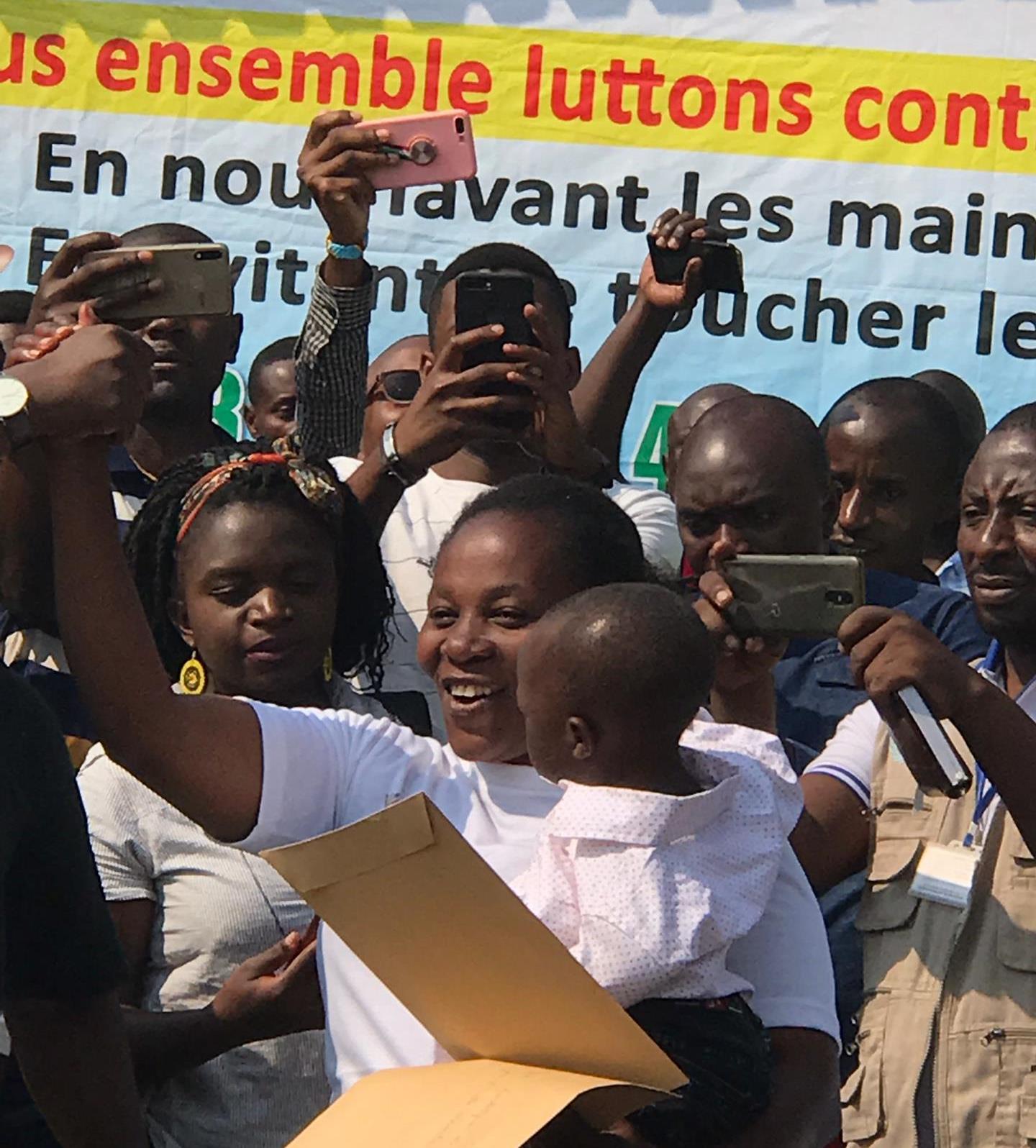
WHO/Peter Graaff
In the fight to stop the spread of Ebola in the Democratic Republic of the Congo there are many dark days. Tuesday 13 August was not one of them.
Blinking in the bright Goma sunshine, Mama Esperance and baby Ebenezer did not look like a pair who only days earlier were on the brink of despair and death.
Their cases (the third and fourth in Goma) were detected quickly. Esperance Nabintu’s husband was the second case detected in the city of nearly 2 million people.
He was a miner who returned home from Ituri seeking care for an illness he did not know was Ebola. And, equally unknowing, Esperance and her baby were infected.
Unfortunately, Esperance’s husband died but, just ten days after confirmation of infection, both his wife and baby recovered and are in good health.
“Today is a day of celebration because we have two people here who have survived,” Dr Bachir Mbodj, Deputy Incident manager, WHO DRC Ebola response in Goma told the gathering of health workers, Ebola response partners, government officials and friends who had come to celebrate their release from the Ebola Treatment Centre at Goma Hospital on August 13.
“Mama Esperance and her son are alive because they came early for treatment. Sadly, Mrs. Esperance’s husband came too late, and could not be saved,” said Dr Bachir. “It is essential that everyone in the community knows that rapid detection of Ebola virus disease and early treatment saves lives.”
Both Esperance and her son were offered life-saving treatment, including drugs that are improving survival rates.
Ebola hasn't been cured yet, but these two drugs are improving survival rates and this news will provide hope for communities affected by Ebola.
The effective drugs are a tool in our toolbox against Ebola. “But it doesn’t in itself stop Ebola," says Dr Mike Ryan, Executive Director of the WHO Health Emergencies Programme. What will stop Ebola is … good surveillance, good infection prevention and control, good community engagement, excellent vaccination and the use of these therapeutics in the most effective way possible, in safe and humane Ebola treatment units. It’s not one answer. It’s many things.”
With the recovery of Esperance Nabintu and her baby Ebenezer, there are currently no cases of Ebola in the city of Goma.
However, the risk of national spread remains very high as the population in affected areas is highly mobile.
With surveillance teams checking numerous alerts each week, WHO continues to work to ensure that any case of Ebola in Goma is identified and responded to immediately.
Efforts to prepare Goma for Ebola include:
- More than 5000 health workers have been vaccinated in Goma
- Health centres have been provided with training and equipment to improve infection prevention and control.
- Safe and dignified burial teams have been trained and equipped, and community awareness campaigns have been conducted.
- Two Ebola Treatment Centres run by the Ministry of Health and Médecins Sans Frontières are operational.
- Screening at border crossings in Goma has been reinforced and 24-hour monitoring implemented at Goma airport.
